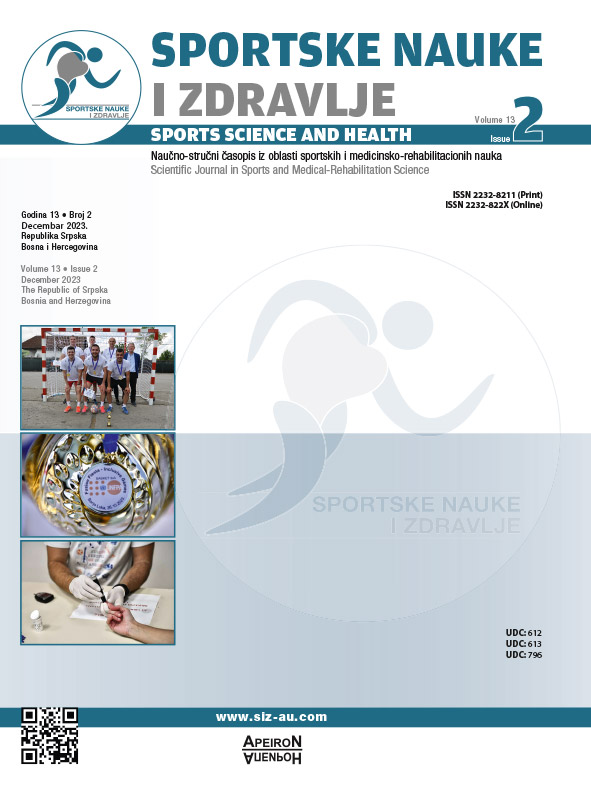Theraband Exercise Program: Effective to Improve the Muscle Fitness of the Elderly
DOI:
https://doi.org/10.7251/SSH2302215NAbstract
Physical activity in the elderly is still primarily focused on cardiorespiratory exercise, with less emphasis placed on muscle fitness. Thus, exercises to promote muscular fitness are required. As a result, in the Covid-19 era, a fun fitness concept was developed to improve muscle fitness. The development process, however, must include validation and effectiveness testing. The research aims were to (1) examine the content’s validity and (2) examine the effectiveness of the fun fitness training model. The development of a quantitative and qualitative approach was the research method used. Seven experts took part in the study, including five licenced fitness instructors and two sports academics. The effectiveness test included 30 elderly men and women aged 60 years and weighing 60-80 kg. A 1-4 Likert scale questionnaire, hand grip dynamometer, and leg dynamometer were used as research instruments. SPSS and Excel software was used to help with the Aiken formula data analysis technique and the paired samples t-test. The research was divided into four stages: (1) Developing models through the qualitative analysis of books and e-books; (2) evaluating the model quantitatively using the Delphi method; (3) Examining the findings of the evaluation of seven specialists; and (4) Conducting tests to assess the results. The 12 models were deemed realistic based on the seven experts’ collective qualitative findings. According to quantitative findings, the value coefficients for the material’s suitability, depth, and practicality range from V 0.76 to V 0.80. A significance value of 0.000<0.05 indicates that the findings of testing the effectiveness of the fun fitness model can significantly improve the strength of the arm and leg muscles. In conclusion, the fun fitness training model shows high content validity and has the potential to improve elderly muscle fitness.
